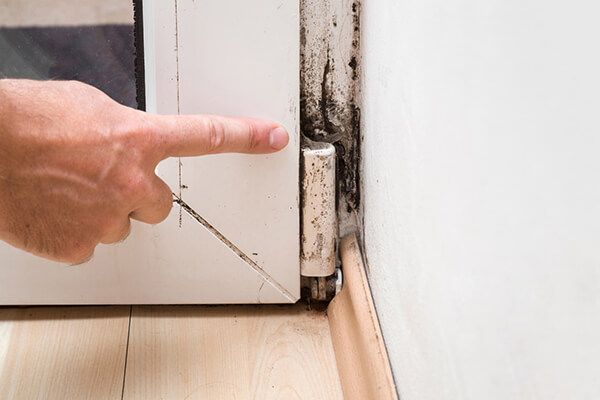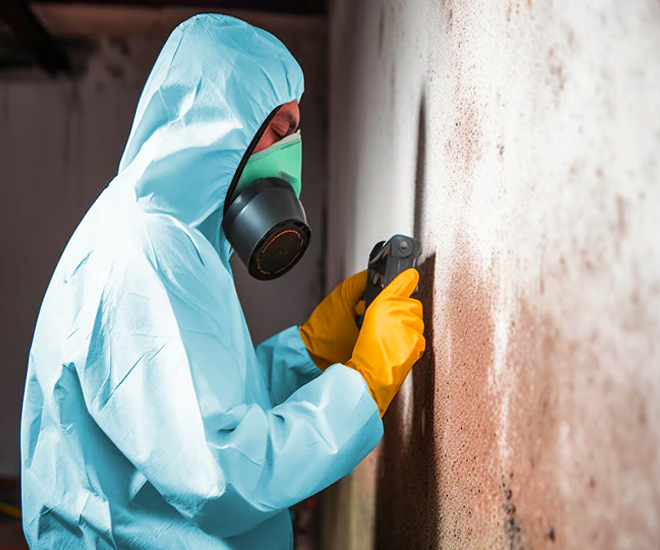Comprehensive Post Mold Remediation Procedures
Specialist Tips for Article Mold And Mildew Remediation Success
In the realm of mold and mildew remediation, efficiently eliminating mold and mildew is just half the fight; the real obstacle lies in preventing its reappearance. Post-remediation initiatives play a critical function in making sure a mold-free setting in the long-term. By sticking to skilled ideas and finest techniques, people can guard their rooms versus mold resurgence and preserve a healthy and balanced indoor setting. It remains in this stage of the removal process that attention to information and proactive actions absolutely make a difference.
Monitor Humidity Levels Frequently
After completing mold and mildew removal procedures, maintaining ideal moisture degrees is crucial to avoid mold and mildew re-growth and ensure a healthy and balanced indoor setting. High humidity degrees over 60% produce a conducive environment for mold to prosper, making normal keeping track of a proactive procedure to stop any future mold and mildew concerns.
Using hygrometers or wetness meters can assist in properly gauging moisture degrees in various locations of the home. These devices supply real-time information that makes it possible for remediation professionals to make informed choices concerning ventilation, dehumidification, and various other required actions to preserve optimal humidity degrees post-remediation. In addition, establishing a regular timetable for humidity checks, particularly in risky areas such as kitchens, washrooms, and basements, is a proactive technique to mold and mildew prevention. By constantly keeping an eye on moisture degrees, homeowner can effectively mitigate the danger of mold reoccurrence and keep a healthy indoor environment post-remediation.
Conduct Thorough Inspections Post-Remediation
Adhering to the conclusion of mold remediation treatments, it is vital to perform extensive examinations to validate the effectiveness of the removal procedure. These post-remediation inspections are crucial in ensuring that the mold issue has actually been effectively dealt with which there is no recurrence or continuing to be mold and mildew development. Inspections need to be performed by qualified experts that have proficiency in identifying mold and mildew and analyzing indoor air quality.
Throughout these assessments, various techniques such as visual evaluations, air sampling, and surface sampling may be used to completely review the remediated areas. Aesthetic assessments involve a detailed evaluation of the premises to look for any kind of visible indications of mold development or water damages. Air sampling assists in figuring out the airborne mold spore levels, while surface tasting can identify mold and mildew bits on surfaces.
Implement Proper Air Flow Methods
After guaranteeing the performance of the mold remediation procedure with detailed inspections, the following essential action is to focus on applying correct air flow approaches. Ample air flow is necessary in stopping mold reoccurrence by go to my site regulating dampness degrees and promoting air circulation.
Appropriate ventilation not only aids in avoiding mold development however likewise adds to the overall wellness and comfort of owners. By guaranteeing ample ventilation throughout the home, you can lower the risk of mold regrowth and create a much healthier living atmosphere. Routine upkeep of ventilation systems, consisting of cleansing and filter replacements, is vital to maintaining efficient air flow. Consulting with HVAC specialists can supply additional understandings into optimizing ventilation techniques for your certain residential or commercial property needs.

Usage Mold-Resistant Materials for Services
To improve the long-lasting efficiency of mold and mildew remediation initiatives, incorporating mold-resistant products for repair services is important in minimizing the danger of future mold and mildew growth. Mold-resistant materials are designed to stand up to wetness and hinder mold and mildew development, making them an essential option for locations susceptible to dampness and moisture. When repairing areas influenced by mold and mildew, making use of materials such as mold-resistant drywall, mold-resistant paints, and mold-resistant caulking can help stop mold and mildew reoccurrence.
Mold-resistant drywall is an outstanding option to typical drywall in locations like basements and bathrooms where moisture degrees are higher. When subjected to damp problems, this kind of drywall has a special covering that stands up to mold growth also. Furthermore, making use of mold-resistant paints having antimicrobial representatives can better inhibit mold and mildew advancement on ceilings and walls.
In areas where moisture prevails, such as kitchens and restrooms, utilizing mold-resistant caulking around windows, sinks, and bathtubs can assist seal out water and prevent mold from holding in fractures and holes. By buying these mold-resistant products during repair services post-remediation, you can significantly lower the chance of future mold concerns and maintain a much healthier interior environment.
Maintain Sanitation and Address Water Issues
After mold remediation, it is critical to keep a clean environment to avoid the regrowth of mold. Leakages, water intrusion, or high moisture levels can create the best breeding ground for mold and mildew, so it is crucial to deal with any kind visit their website of water-related issues quickly.
To keep cleanliness, consider utilizing HEPA filters in vacuums and air cleansers to trap mold and mildew spores and prevent their blood circulation airborne. In addition, ensuring proper ventilation in locations prone to moisture accumulation, such as cooking areas and restrooms, can help keep humidity levels in check. By staying vigilant about cleanliness and dealing with water issues promptly, you can efficiently stop mold and mildew reinfestation and preserve a healthy and balanced interior atmosphere.
Verdict

In the world of mold remediation, successfully removing mold is just half the battle; the real obstacle lies in stopping its reappearance. After completing mold and mildew removal treatments, maintaining optimal humidity levels is vital to avoid mold and mildew re-growth and guarantee a healthy indoor setting. High moisture levels above 60% create a favorable atmosphere for mold and mildew to grow, making normal keeping an eye on an aggressive step to prevent any future mold issues.
To improve the long-term efficiency of mold and mildew removal initiatives, incorporating mold-resistant materials for repair services is essential in minimizing the risk of future mold growth. After mold remediation, it is essential to preserve a tidy setting to prevent the regrowth of mold.